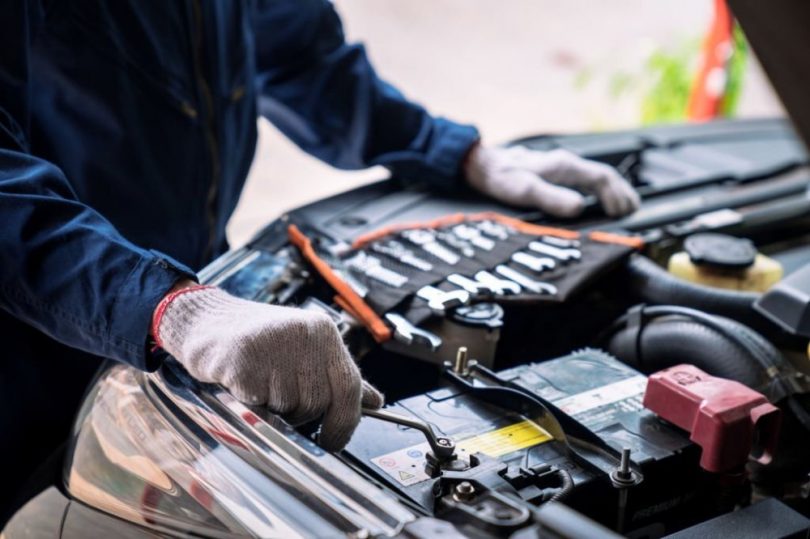You have a fairly new battery, and you believe the alternator is good, but you have trouble starting your car because the battery is continually dying. Chances are the battery isn’t charging. The solution is to find out why the battery isn’t charging.
Here we’ll look at why the battery isn’t charging and how to find the issue.
How it operates
The charging system in your vehicle consists of three components, the alternator, the voltage regulator, and the battery—the electric current from the battery powers the engine.
Your voltage regulator monitors the electrical current. It signals the alternator when the battery needs to recharge and ensures it is fully charged. The alternator creates the electric current that runs anything in the car needing the current, like the lights, radio, and windshield wipers.
Indications That the Charging System Is Deteriorating
Sometimes something will happen to the car, and it appears random, but when more than one thing happens, it may be a sign that the charging system has an issue or two.
One or more of these issues may mean there is a problem with one of the components
Dimming of headlights and dash lights as you drive
When you’re driving, and lights start dimming, that’s a sign the battery doesn’t have enough power to run the accessories. It could be that the battery is not getting or holding a charge, or it could also be the alternator.
Battery undercharging
When you only drive short distances or stop and start, such as city driving, the battery undercharges. Not driving the car long enough to engage the alternator means the alternator can’t recharge the battery. Dimming lights result from this, and the battery will start, then die out or not start at all.
Cars that sit for more than two weeks can be difficult to start or may not start at all. The battery has lost its charge from not being driven. Recharging the battery should do the trick. If it doesn’t, you probably need a new battery.
No battery charge from the alternator
The issue may not be with the alternator but with the tensioner and serpentine belt that help power the alternator. So the alternator is good, but some of the assisting components are not.
The battery is defective
A bad battery could be multiple issues. It could be corrosion on the terminals, bad cables, insufficient charging, or a leaky battery. The battery could be old and can’t hold the charge anymore.
Noisy car engine
Squealing under the hood signifies the serpentine belt is cracked or loose.
Overcharged battery
Overcharging the battery can heat the battery to the point of destruction. A defective regulator allows too much energy to the battery, causing overcharging.
The overcharge is often accidental, such as leaving the vehicle on a battery charger too long. A faulty starter can also charge the battery to overcharge.
Finding the Problem
The battery
Since the battery seems to be the problem and it is the easiest the get to, start there first. When the battery is defective, all the charging is the world will not fix it. It’s no longer able to hold a charge.
The highest quality batteries are good for four to six years. If your battery is mid-range, it may not last as long. Extreme temperatures also affect the battery. Living in hot or cold climates will affect your battery life.
You can remove or recharge the battery while it is in the car, but that will only work for so long, and the battery will eventually die. You are just buying time before you have to replace the battery.
The auto parts store will test the battery. Of course, you will have to take it to the store. Most stores will test the battery for free. Or use a multimeter to check it yourself.
-
Checking the battery
Start by inspecting the outside of the battery for damage, cracks, or holes where the battery could leak.
-
Check the terminals
Check for corrosion on the terminals and bolts. If dirty or corroded, use a baking soda paste and water 1/4 cup baking soda and 1/8 cup water to clean them. Use a cloth or gloved hand to apply the paste, let it sit for 10 minutes, then use a stiff toothbrush to clean the paste and grime away. Be sure to wipe it with a damp cloth to remove the residue.
-
Check the cables
Inspect the cables and wires that lead to and from the battery. You are looking for cracked, broken, or damaged cables or wires. Following them with your hand will help you feel what you may not see.
Check to ensure that all the plugs are snug and intact too. All three of these will interrupt the electric current to the battery.
Checking the serpentine belts
The lifespan of a serpentine belt is 60,000 to 100,000 miles. If you bought the car new, never changed it, or have no idea when it was last changed, check this before the battery. It may be the issue.
When you check the serpentine belt, check if it is loose. A loose belt will not run the alternator as it should, so the battery will not charge.
Look for missing pieces on the belt, cracks, deep grooves, and shiny spots (increased wear) on the belt.
If there is damage to the serpentine belt or you are unsure if it is still good, replace it. Be sure to check the tension on the belt. A loose belt is ineffective.
Examining the tensioner
The tensioner’s pulleys and springs maintain the serpentine belt’s tension. If the tensioner is defective, the loose belt can squeal, become hot, or, worst case scenario, fly off and damage the alternator or something else under the hood.
When and if you change the serpentine belt, you should change the tensioner too!
Parasitic Draining
You have a parasitic draw when your car uses battery power when the vehicle is off. Some things like a car alarm ( think blinking light) and the car’s clock will draw some power, but not enough to be a parasitic draw.
You can test for the parasitic draw using a multimeter. The multimeter can pinpoint where the draw is, and you will have the change that component.
Faulty voltage regulator
The voltage regulator regulates the alternator voltage. It can overcharge or undercharge the battery. If your check engine light for the charging system lights, any of the lights start to dim.
The regulator may be overcharging the battery if you’re blowing fuses more than usual. If you begin having electrical issues, it may be the regulator.
The regulator can be checked with the multimeter. If the regulator’s output is high, it is generally the voltage regulator and needs to be replaced.
Defective starter
A bad starter will overcharge your battery. It will also drain the battery, especially if you keep turning the key to get the car to start. It is the starter if you turn the key and hear a clicking or grinding.
Other signs the starter is defective are the lights coming on when the car won’t start. If the engine doesn’t start, there’s smoke or a burning smell, which is the cue to get out of the vehicle and contact a repair shop.
If your starter has oil on it, whether a little or a lot, you have an oil leak, which should be addressed immediately.
Examine the alternator
Despite thinking the alternator is good, you are already looking around, so why not check the alternator and the wiring? Inspect the wires to and from the battery, and look for cracked casings, broken wiring, and loose plug-ins. Make sure they are not corroded.
If you have the multimeter, test the alternator, it only takes a few minutes, and you’ll feel better knowing the alternator is in good working order!










Leave a Comment